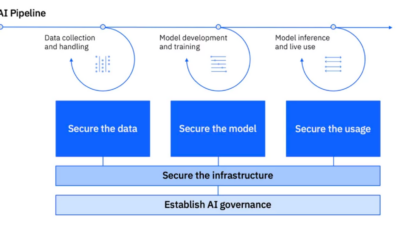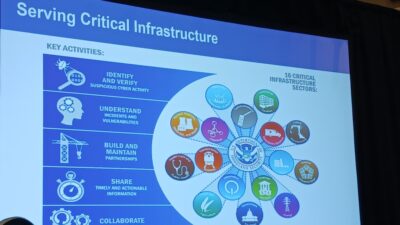Cover Story: Advancements in human-machine interfaces (HMIs) lead to increased productivity, simplified graphics configuration, and mobility.
Today, operators are being asked to do more and consider more data in their decisions. When a human machine interface (HMI) is designed based on current best practices and guidelines, it can help improve how operators process information and improve total operations.
In a control system, the HMI is a gatekeeper that prevents operators from being inundated with data and a guide for performing safe actions.
Trends in the automation industry are leading to HMI developments that improve process safety and operations in facilities. HMI improvements in areas such as human centered design (HCD), graphics configuration, and graphics portability enable engineers and operators to become even more productive.
At the heart of HMI development is HCD research that includes teamwork among automation designers, academia, and users. One group performing this type of research is the Center for Operator Performance (COP), a research consortium that addresses human capabilities and limitations through research, collaboration, and human factors engineering. With the solid foundations of research and user testing, an HMI can be designed that is fit for modern requirements.
Designing an HMI from the ground up, rather than tacking on a pre-built HMI, means less configuration rework later and native integration with the system, simplifying the process for engineers and operators.
HMI can increase productivity
The distinction between effective and ineffective displays is the degree to which the data results in actionable information. Recent and ongoing university-led research has laid a foundation for a better understanding of how humans recognize and understand information. HMI designers use these discoveries in creating a process environment that elicits best responses from personnel. Research areas include visual attention, pattern recognition, and display navigation.
Modern HMIs are designed with the following HCD principles in mind to deliver a highly efficient operations experience centered around the users’ needs.
Visual attention: What items do operators notice, or not notice, on a screen that they interact with on a shift? The answers impact how automation and process challenges are overcome and how potential costly errors are handled. For example, research shows advantages to using muted colors across most of the screen and saving more salient colors to attract operator attention to abnormal situations (Figure 1).
Pattern recognition: The use of patterns in displays improves the speed and accuracy of an operator to assess conditions. In a traditional interface (Figure 2), the operator needs to read and compare numbers. Modern HMIs use familiar patterns (Figure 3) so the display itself becomes information that requires less interpretation. This allows the operator to quickly recognize changes in the process conditions and be less reliant on reading and calculating. In addition, consistency in the placement of information means the operator will know where to look and can scan a display quickly to find related information.
Display navigation: With operator spans or boundaries of control increasing, operators often must navigate through hundreds of displays. Best practices recommended by the Center for Operator Performance and standards by the International Society of Automation (ISA) suggest organizing displays into a hierarchy of information (Figure 4), based on equipment areas. The purpose of the hierarchy is so that an operator can quickly access the display needed and take appropriate action.
The display content at each level is defined based on the operator’s tasks. For example, the overview display is the highest and most abstract level of presentation. It would include only the information needed by the operator to determine-within a few seconds-if the process is okay. Level 2 displays are typically the primary control displays, and the Level 3 displays are used for debugging.
Unfortunately, the hierarchy is not always adopted because most HMIs have not been designed from the ground up for hierarchical navigation and don’t offer efficient tools to create them. Modern HMIs can simplify the hierarchy-creation process.
Simplify graphics configuration
The demands for control system HMI functionality and display complexity continue to increase. However, graphics configuration tools have not kept pace with the needs-quite often requiring engineers to use programming languages to create moderately complex graphics solutions. This is changing with modern HMIs, which are designed to enable engineers to easily create an HCD-based, environment. These environments allow operators to be more productive and optimize operations overall.
Less reliance on scripting: Graphics configuration should not require a degree in software programming to create, tailor, or adapt to different operational philosophies. Users expect a more intuitive interface when configuring displays that need little, if any, programming and allow project schedules to be met with certainty. HCD principles enable certain tasks to be simplified, such as those involving scripting, and provide graphics configuration tools that deliver complex functionality without requiring volumes of scripts.
Tailorable by the operator: Rather than an engineer configuring displays for all operator tasks and the operator having to wait for the engineer to implement changes, manufacturers are giving the operator more power. An engineer can configure the operator’s workspace to allow the operator to customize portions of it as required. For example, using a modern HMI, an operator might drag and drop a control tag onto an area of the display so that it can be easily monitored during a shift.
Change management: Equipment changes and control strategies evolve throughout the lifecycle of a facility. Displays must be modified accordingly. Even if the displays are initially configured by a third- party or vendor, the plant automation engineer often is called upon to handle these day-to-day display changes. Modern graphics tools can provide built-in, user-friendly capabilities to reduce the amount of time required to configure displays. For example, a single change can be applied automatically to many items on a display, or across several displays.
Displays outside the control system
To meet changing user expectations, system information is needed more frequently outside of the control room and on interfaces other than an operator’s workstation. The interface must meet the needs of workers who are accustomed to having information at their fingertips virtually anywhere-on their desktops, laptops, or mobile devices.
However, increasing concerns around cybersecurity have created new requirements and have made it more difficult to securely send process control information outside of the control room. Modern control systems have added network layers of protection along with a number of other security protections. Modern mobility solutions are designed based on these more secure architectures and can provide viewing access easily, without having to convert displays into new formats.
Older control systems often were not designed or installed with these cybersecurity requirements in mind. In response, previously available access to remote displays is being disabled, even though plant personnel still need access to the system’s information.
Modern HMI designs build mobility into displays so they can be adapted to the evolving needs of different plant environments and be scaled over time. By implementing systems with secure display portability now, facilities will not have to redo them later to incorporate mobile device accessibility.
The trend is to use HTML5 as the underlying technology for displays, as it has become a pervasive language for graphical interfaces and design. When control displays are based on HTML5, they can be securely viewed on web- and Microsoft Windows-based interfaces with no display conversion required.
When the control system HMI meets the needs of operators and engineers, the process, quality, and efficiency of operations naturally improves.
Operators can recognize issues faster, easily process information, and readily adapt to changes. In addition, through HMI advancements, engineers more easily can adopt industry graphics standards and best practices. Operating the process becomes safer, more intuitive, and effective by improving situational awareness and turning data into useful information, allowing operators to make assertive decisions—quickly and easily.
Camilo Fadul is a DeltaV product manager operations and Cindy Scott is a DeltaV product director at Emerson Automation Solutions. Edited by Emily Guenther, associate content manager, Control Engineering, CFE Media, [email protected].
More answers
www.controleng.com keywords: human-machine interface
How to improve process operations with modern human-machine interfaces (HMIs).
The benefits of HMI advancements.
Modern HMIs and cybersecurity risks to consider.
Consider this
What cybersecurity concerns need to be considered when sending process control information outside of the control room?

